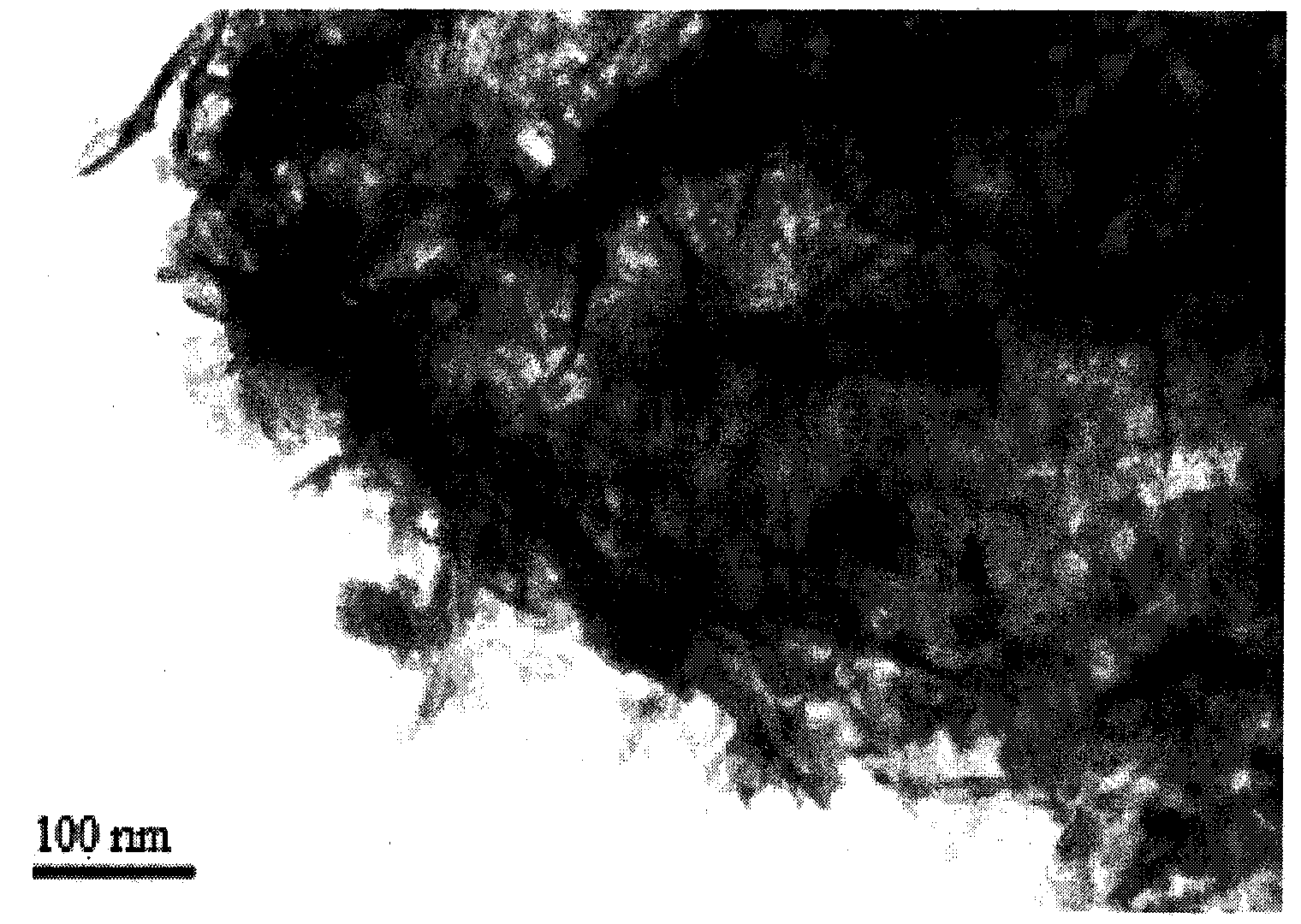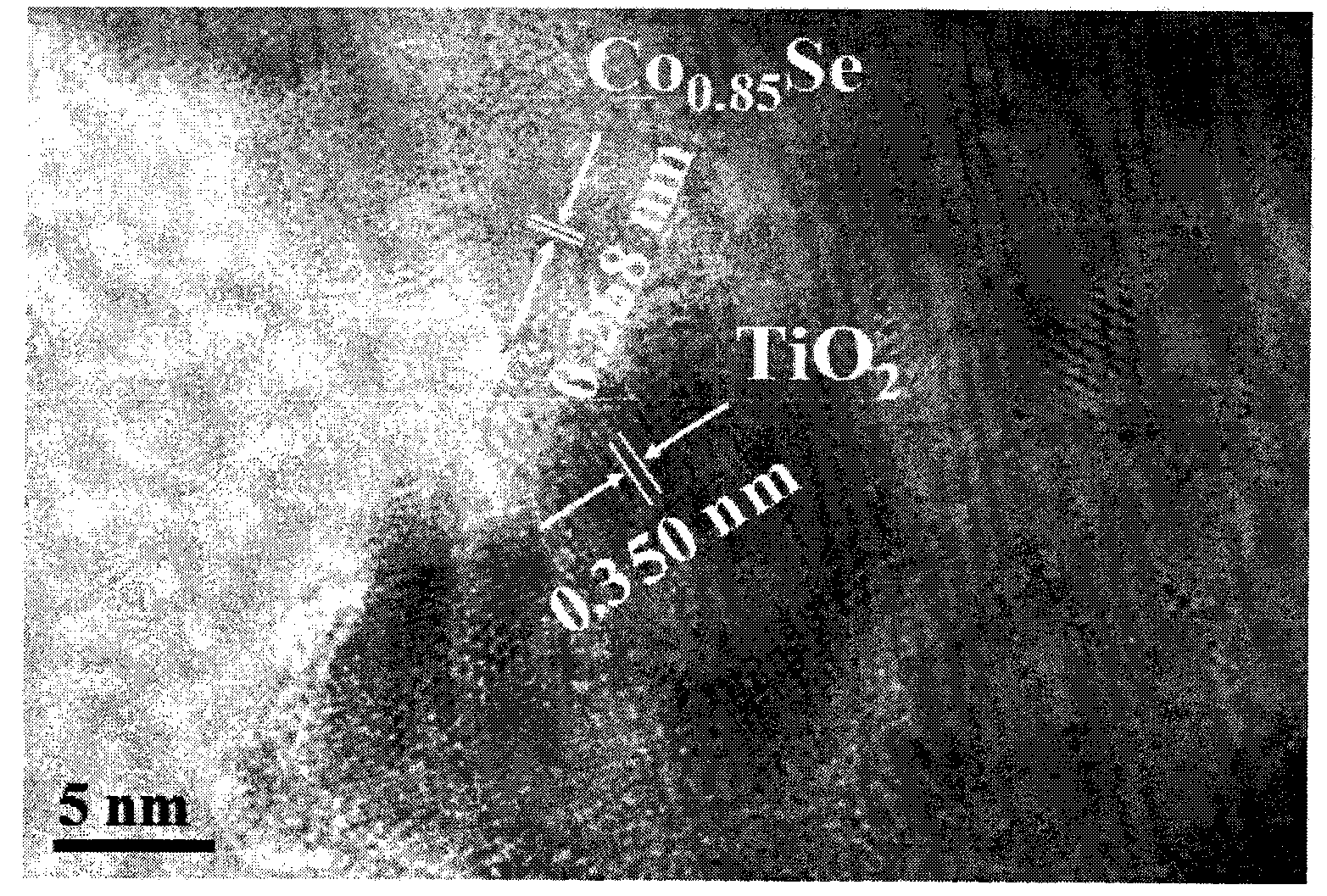Preparation method for catalyst efficiently catalyzing hydrogenation reduction of 4-nitrophenol
A technology of p-nitrophenol and catalyst, applied in the field of cobalt selenide nanocomposite materials, can solve the problems of restricting the wide application of composite materials, not suitable for industrial production and use, and not suitable for industrial production, and achieve good potential application value and good repeatability Exploitable, easy-to-control effects
- Summary
- Abstract
- Description
- Claims
- Application Information
AI Technical Summary
Problems solved by technology
Method used
Image
Examples
Embodiment 1
[0030] Example 1: Preparation of Titanium Dioxide-Loaded Cobalt Selenide Nanocomposite:
[0031] ① Prepare Co according to the technical scheme reported in Experimental detail of Applied Catalysis B: Environmental 2012, 119-120, 139-145 0.85 Se, the specific steps are: weigh 0.5 mmol Co(NO 3 ) 2 ·6H 2 O and 0.5 mmol Na 2 SeO 3 , add 18 ml of distilled water, then slowly dropwise add 2 ml of 85% hydrazine hydrate aqueous solution under the condition of magnetic stirring, continue stirring for 20 minutes and transfer the resulting solution to a 25 ml high-pressure reactor, at 140 degrees Celsius After standing for 24 hours, it was taken out, and after being naturally cooled to room temperature, the obtained product was washed alternately with ethanol and distilled water three times, and dried in an oven at 60 degrees Celsius for 6 hours to obtain cobalt selenide nanosheets.
[0032] ②Aspirate 25 μl of n-tetrabutyl titanate (TBOT) with a pipette, inject 20 ml of anhydrous et...
Embodiment 2
[0039] Example 2: Catalytic reduction of p-nitrophenol:
[0040] Mix 2 ml of distilled water, 0.1 ml of 5.0 × 10 -3 The p-nitrophenol aqueous solution of M was added to the quartz cuvette in turn, and an absorption peak was measured at 317 nm with an ultraviolet-visible spectrophotometer; There is an absorption peak at 400 nm for measurement by UV-visible spectrophotometer, and the concentration corresponding to this absorption peak is set as the initial concentration; finally, 1 mg of titanium dioxide-loaded cobalt selenide nanocomposite is added, and UV-visible nanocomposites are added every 1 minute. Spectrophotometer measurements were taken until the peak around 400 nm no longer changed significantly.
[0041] The catalytic properties of the samples for p-nitrophenol were tested using a Shimadzu UV-3600 UV spectrophotometer.
[0042] Figure 7 , Figure 8 For the ultraviolet-visible absorption curve of the composite material at room temperature for the reduction of cat...
PUM
| Property | Measurement | Unit |
|---|---|---|
| thickness | aaaaa | aaaaa |
| particle diameter | aaaaa | aaaaa |
Abstract
Description
Claims
Application Information
 Login to View More
Login to View More - R&D Engineer
- R&D Manager
- IP Professional
- Industry Leading Data Capabilities
- Powerful AI technology
- Patent DNA Extraction
Browse by: Latest US Patents, China's latest patents, Technical Efficacy Thesaurus, Application Domain, Technology Topic, Popular Technical Reports.
© 2024 PatSnap. All rights reserved.Legal|Privacy policy|Modern Slavery Act Transparency Statement|Sitemap|About US| Contact US: help@patsnap.com










